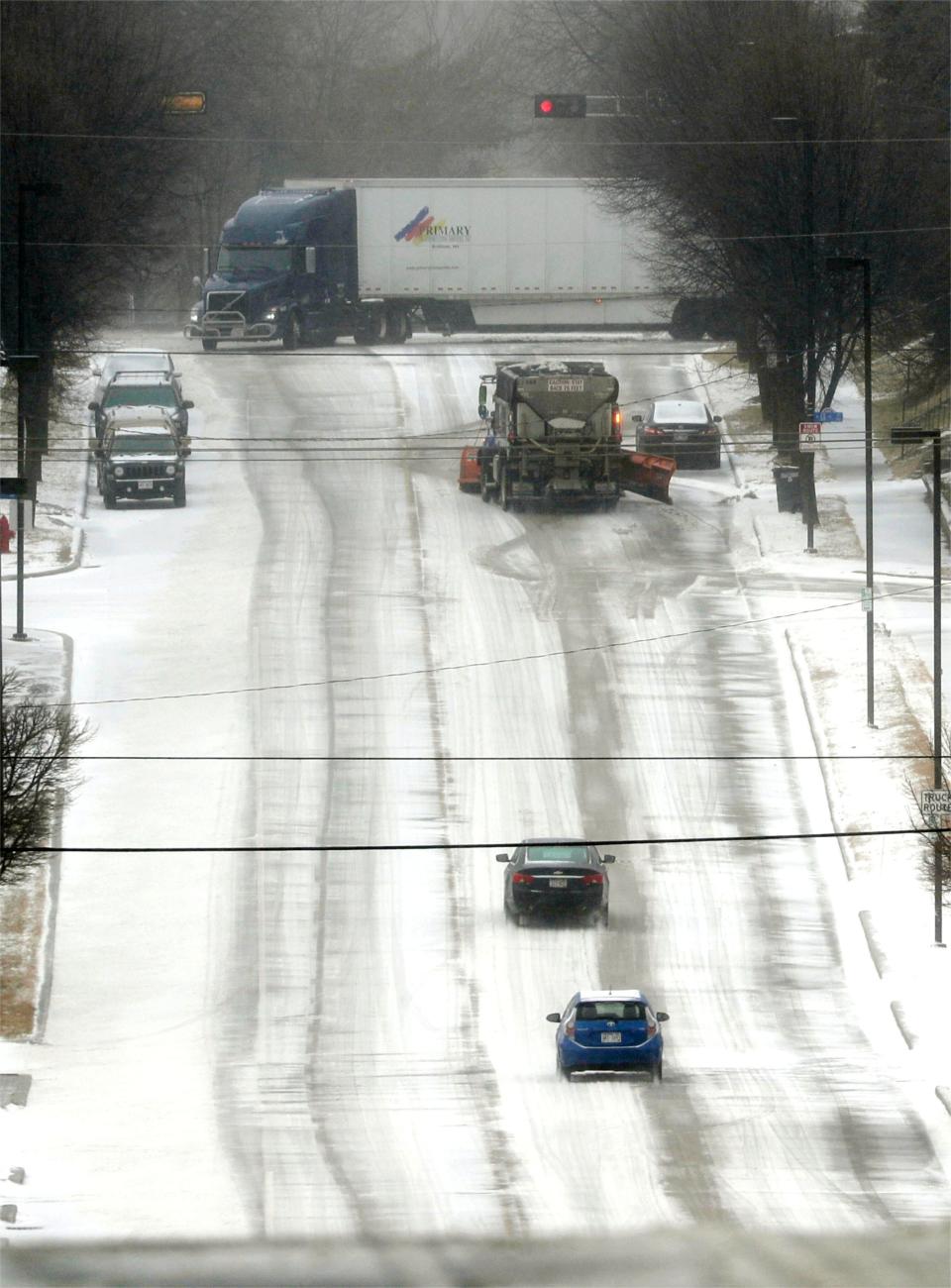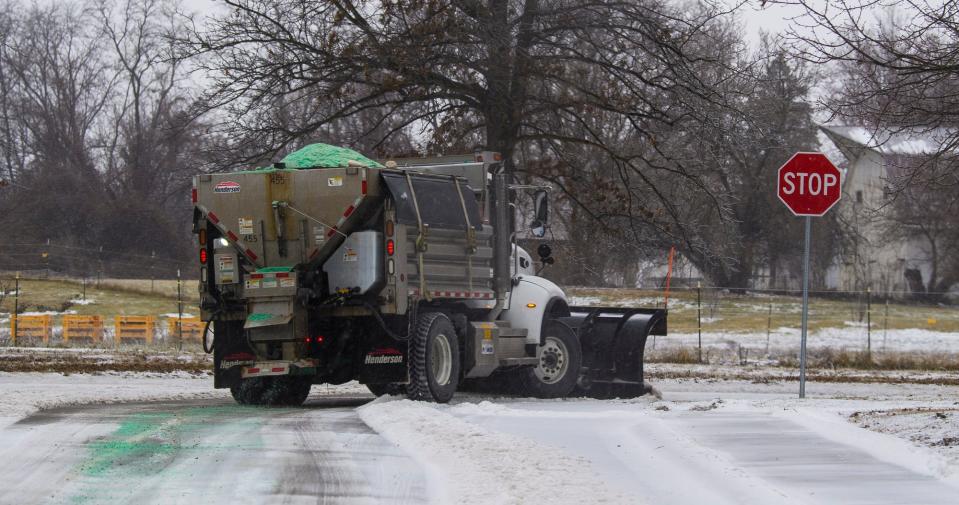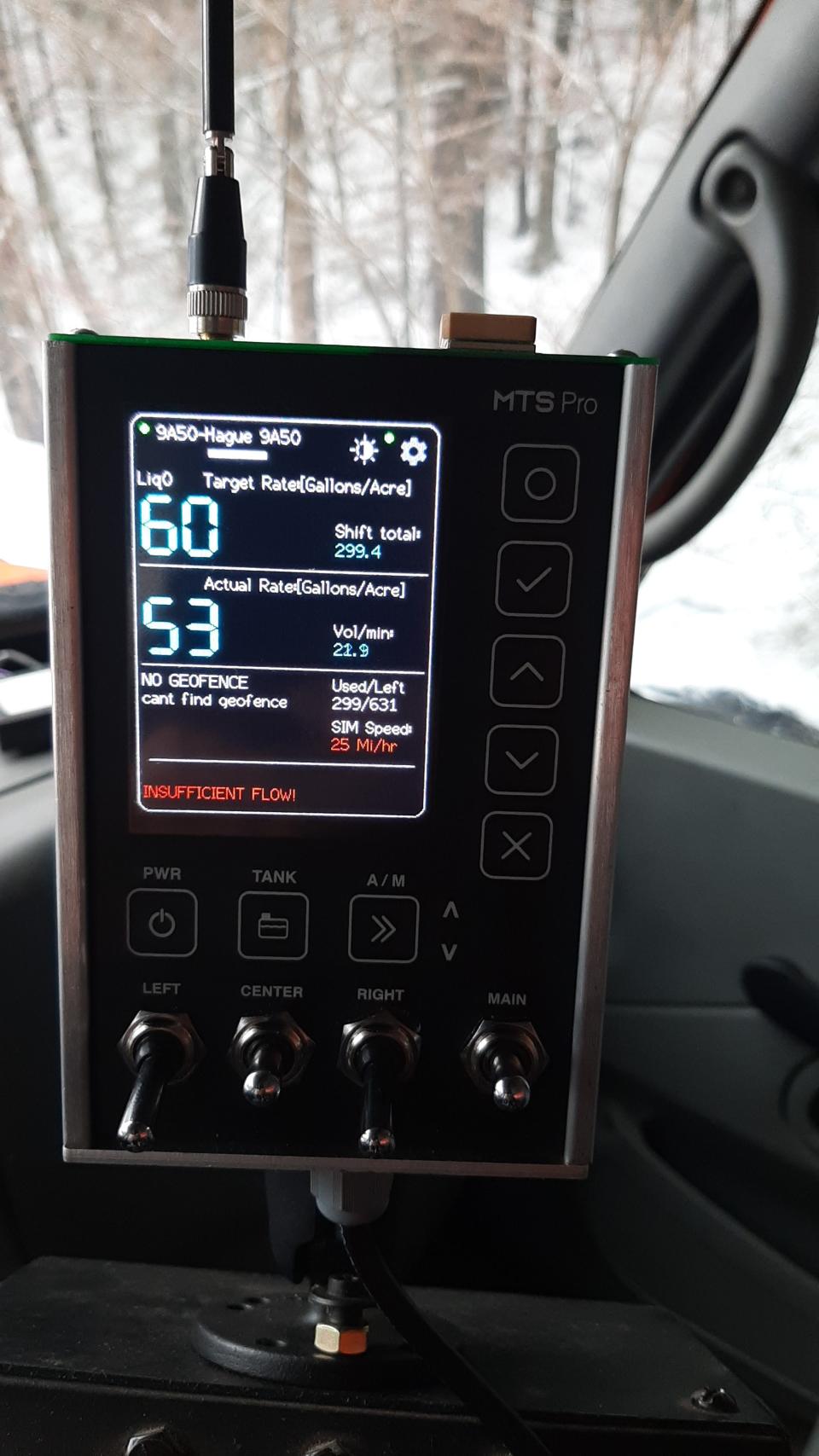Road salt triggering 'massive' harm to US lakes, contaminating drinking water, studies warn
Five years ago, Hague was part of the problem.
Each winter, more than 6 feet of snow fell on the upstate New York town nestled between scenic Lake George and the Pharaoh Lake Wilderness Area. Each year, the highway department dumped as much as 2,200 tons of rock salt onto 110 miles of road – nearly 2 pounds of salt for every square yard of road.
And Hague is just one of more than a dozen communities that dot Lake George’s banks. Their combined use of road salt has increased the lake’s salinity nearly threefold over the past several decades, according to research by the nonprofit Fund for Lake George. The lake’s salt levels are now more than 30 times higher than more isolated lakes in the Adirondack Mountains, the group found.
Then Hague outfitted its trucks with “live edge” plows, which adjust their fit to hug the road’s curves, like a swiveling razor. New equipment better calibrated the trucks’ salt spreaders and reduced output to no more than necessary. In certain situations, they switched to a liquid brine that further reduced the salt used.
In those five years, Hague dropped its salt use by more than three-fifths.
“We realized the amount of salt we had been wasting and it was amazing,” said Tim Fiallo, an equipment operator for Hague. “We’ve been able to reduce the amount of (salt) doing harmful things in our environment.”
Unfortunately, Hague’s improvement represents just a few grains in the shaker.

Across much of the United States, road salt and similar deicing materials remain a threat to the environment and human health, according to a review published this month in the journal Frontiers in Ecology and the Environment.
The paper warns that the use of road salt is “triggering a massive increase” in freshwater salinity, with levels commonly surpassing thresholds dangerous to aquatic life and causing “widespread contamination” of drinking water. The problem is particularly pervasive in the Northeast and Midwest but affects every region in the country in which it snows, covering 70% of the U.S. population.
“Around the northern United States – (in) places that get ice and snow – lakes on average have increased their amount of salt three to five times in the last four decades,” said Rick Relyea, a biological scientist at Rensselaer Polytechnic Institute in New York and co-author of the review.
Video: Massive Illinois interstate pileup caused by snowfall
Read more about snowy roads: Heavy road salt use in winter is a growing problem, scientists say
Studies included in the review compared the levels of chloride – a primary component of road salt – found in lakes and streams with the U.S. Environmental Protection Agency’s recommended freshwater thresholds. Samples of urban streams in 13 Northern cities found more than half exceeded EPA’s thresholds. Another study found concentrations in Baltimore reached 100 times higher than what was found in forested streams, even in the summer and fall as salt poured in from the prior winter.
Research also suggests the EPA’s thresholds may be far too high. Studies have shown that just 5 milligrams of chloride per liter of water can harm zooplankton, tiny animals that form the base of an aquatic ecosystem’s food chain, Relyea said. The EPA thresholds are 46 times higher for long-term levels, 172 times higher over the short-term.
“If you protect the plankton, you’re generally protecting most other animals,” Relyea said. “And these protective guidelines typically don’t protect the plankton.”
And what happens when you don’t protect the plankton? Research in the Great Lakes region estimates that within 50 years many of the country’s urban lakes could exceed the EPA’s recommended limits for chloride, jeopardizing fish at the top of the food chain like trout, walleye and pike.
“Endemic, freshwater species are certainly going to die or at least be stressed enough to not be as successful,” said Hilary Dugan, a professor of integrative biology at the University of Wisconsin-Madison who studies the effects of road salt in the Great Lakes region. “We could easily have a country full of lakes that only have carp in them. That would certainly still be an ecosystem, but not an ecosystem most of us want.”
The threat to drinking water may be even greater. Studies of private drinking water wells near a salt storage shed in upstate New York found that more than 1 in 5 exceeded the EPA's recommended limit for chloride. Extrapolating statewide, researchers estimated as many as 1 in 4 wells could be affected because of their proximity to salt sheds or roads.
Salt contamination also can make water corrosive to the point that it eats away at lead in plumbing – more than 1 in 10 of the homes with private wells studied in New York had drinking water with unsafe levels of lead. Once in soil, road salt also can cause the release of radioactive elements like radium and radon into groundwater, potentially harming nearby residents.

Though researchers have known about such risks for some time, the report comes at a crossroads, Relyea said: The science is concrete enough to demonstrate the harm from road salt at a time when technology can point a way out.
“We want to get the word out,” Relyea said, “that collectively people who have been working on this problem have discovered a whole lot of solutions.”
Cutting out the salt
The scale of America’s road salt problem is massive. The U.S. Geological Survey estimates that Americans apply 20 million to 24 million tons of road salt every year. Pinning down an exact figure is challenging because a significant amount comes from private users: businesses and homeowners who put down salt on their properties to prevent slip and falls.
The biggest known users are state transportation departments, which average about 10 million tons of solid deicing material a year. Among those, the snowy states across the Rust Belt use the most. Over the past five years, Pennsylvania has led with an average of 1.3 million tons, followed by New York, Ohio, Michigan and Wisconsin.
But ecosystems can handle only so much salt, the researchers say, so the concentration of salt used may be more important than the amount. By that measure, it’s New England states that top the list of most salt used by mile: 37 tons in Rhode Island, trailed by Massachusetts, New Hampshire, New York, Vermont and Maine.
The key to helping the environment, the researchers say, isn’t to eliminate salt entirely but to reduce its use to only what is necessary and to what an ecosystem can handle. “You can’t just turn off the spigot,” Dugan said.
Jefferson County, Wisconsin, reduced its salt use by more than half since starting to experiment with methods about seven years ago, said Bill Kern, the county’s highway commissioner. They started by changing their approach to salt use. Things like reducing truck speed caused less salt to bounce off roads. New routes for plow operators ensured freshly laid salt wasn’t pushed aside.
The county also invested in equipment to create liquid brine and retrofitted its trucks to carry 1,500 gallons at a time. The watery mix uses less salt and doesn’t blow off roads as easily as salt. Depending on conditions, crews mix the brine with rock salt or even switch to it entirely.
Improved weather forecasting and tools that detect road conditions in real time could further reduce salt use by spreading only what’s necessary.

Best of all, Kern added, the decrease in salt use hasn’t caused any drop-off in safety – while the increased cost of road salt means the investments have paid for themselves.
“It’s been a huge cost savings,” Kern said. “We figured in the first winter we may have already paid for all the equipment upgrades.”
Yet challenges remain. In Jefferson County as well as Hague, improvements were at least partially paid for with state funds – a bottleneck that could limit widespread adoption by counties and towns.
An even bigger challenge, said Hague’s Fiallo, may come in overcoming an “old-school mentality” among road departments that are skeptical of new approaches.
“It’s a fight,” Kern said. “Boy, you get attacked, almost. … But you’ve got to get over that.”
Both Kern and Fiallo said other towns and state agencies have inquired about how they reduced salt use. Yet their work remains an exception to the norm. Though ClearRoads’ national data shows some modest reduction in rock salt use over the past two winters, it’s too soon to know if that represents a trend.
Dugan, the Wisconsin professor, said it’s up to all Americans to determine which way the country’s road salt use will trend.
“We’re now aware of the problem, we know where it’s a problem, and we know why it’s a problem, but what are our next steps?” she asked. “Freshwater is a precious resource that, thus far, we’ve undervalued and not really protected.”
This article originally appeared on USA TODAY: Salt makes snowy roads safer but threatens drinking water, environment


